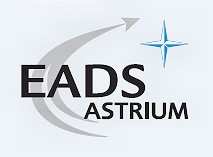Will Develop Technology For New Re-Ignitable Upper Stages
 Astrium has been awarded a contract by the European Space
Agency (ESA) to develop key technologies for new re-ignitable upper
stages for new launchers. Under the two-year contract, worth about
$25 million, Astrium will develop advanced technologies that will
play a major role in enabling the engines of the cryogenic upper
stages (fuelled by liquid hydrogen and oxygen) to be re-ignited.
The project is called CUST (Cryogenic Upper Stage Technologies) and
is issued under the framework of the Future Launchers Preparatory
Programme (FLPP) of ESA. The work will focus particularly on fuel
management in the state of zero-gravity and on the thermal
insulation of the fuel tanks filled with cryogenic fuel.
Astrium has been awarded a contract by the European Space
Agency (ESA) to develop key technologies for new re-ignitable upper
stages for new launchers. Under the two-year contract, worth about
$25 million, Astrium will develop advanced technologies that will
play a major role in enabling the engines of the cryogenic upper
stages (fuelled by liquid hydrogen and oxygen) to be re-ignited.
The project is called CUST (Cryogenic Upper Stage Technologies) and
is issued under the framework of the Future Launchers Preparatory
Programme (FLPP) of ESA. The work will focus particularly on fuel
management in the state of zero-gravity and on the thermal
insulation of the fuel tanks filled with cryogenic fuel.
"It will be a huge challenge to develop the technologies needed
to supply fuel to the engine after a period of weightlessness, but
they are a vital necessity if we want to make more powerful and
flexible launch vehicles. A re-ignitable engine is also an
essential requirement for certain types of space missions like
placing satellites more effectively in their orbits or trajectories
towards 'exotic' destinations, like a Lagrangian point or a
planet," said Thomas Renk, head of the CUST project at Astrium.
"Our experts in Astrium have the necessary know-how, based on many
years of experience with the whole family of Ariane 5 upper stages,
and this new contract will enable them to preserve and extend this
know-how for future applications."
One of the main challenges of designing a re-ignitable cryogenic
upper stage, powered by liquid hydrogen and oxygen fuel and
operating in a zero-gravity environment, is that of maintaining the
fuel in a liquid state. Above a certain temperature, the liquid
turns to gas and there is a risk that the fuel will evaporate.
Another major challenge is that of directing the fuel to the place
where it is needed, namely the feed lines to the engine.
To remain in its liquid state, oxygen has to be cooled to below
minus 183 degrees Celsius, while hydrogen requires the even lower
temperature of minus 253 degrees Celsius. The widely fluctuating
"outside" temperatures in space, due to variations in the intensity
of solar radiation, make it very difficult to keep these highly
volatile substances in their liquid state over an extended period
of time. Innovative insulation concepts are being developed for the
fuel tanks and the upper stage itself, to minimize unwanted heat
transfer to the fuel.
Another challenge to be solved relates to the zero-gravity
environment in which the rocket stage resides after the engine has
been switched off, causing the liquid fuel to float at random
inside the tank. Specific technologies need to be developed to
ensure that the fuel will be immediately available at the feed line
to the engine when the engine is re-ignited.
To support this work, two experiments relating to cryogenic fuel
management will be launched in 2011 onboard the Texus sounding
rocket, as part of the Texus/Maxus programme that Astrium in
cooperation with German Aerospace Center (DLR) has been operating
from Kiruna in northern Sweden for over 30 years.
 ANN's Daily Aero-Linx (11.25.25)
ANN's Daily Aero-Linx (11.25.25) NTSB Final Report: Glasair GlaStar
NTSB Final Report: Glasair GlaStar ANN FAQ: Turn On Post Notifications
ANN FAQ: Turn On Post Notifications Classic Aero-TV: Red Tail Project Update Taking the Mission to the People
Classic Aero-TV: Red Tail Project Update Taking the Mission to the People Airborne 11.24.25: ANN's 30th!, Starships V3 Booster Boom, Earhart Records
Airborne 11.24.25: ANN's 30th!, Starships V3 Booster Boom, Earhart Records



